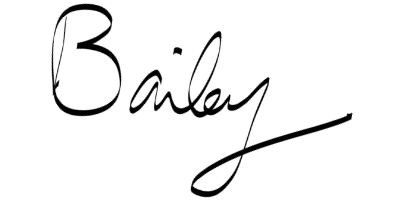This post may contain affiliate links. This means Bailey’s Puzzles might receive a commission on the sale of certain items. This is at NO additional cost to you. Visit the policies page to learn more.
Kakurasu is a logic puzzle. It requires some simple math to complete.
How to Play Kakurasu
Kakurasu is played on an empty grid. The goal is to figure out which cells need to be colored and which should be left blank.
Around the edges of the grid are clues to help you:

- The numbers across the left and the top are the values for each cell. These are always the same. For example, the first cell in a row or column is worth 1, the second 2, etc).
- The numbers across the bottom and right are the totals for that row or column for the colored cells. For example, if the column says “1” at the bottom, you know that only the first cell can be colored and the rest will be blank.
Every row and column has a value attached to it (given to you along the right or bottom). For example, if the value of a row is 10, you know that all the cells within that row must add up to 10.
It makes a lot more sense when you see one done, so check out this example.
Kakurasu Example

Smaller numbers are easier to work with at the beginning because there are fewer possibilities.
This puzzle has a 3 row and a 3 column (which I’ve highlighted in yellow). A 3 has only 2 possibilities to fill (highlighted in orange):
- 3 block
- 1 block + 2 block
This means the 4, 5, and 6 blocks cannot be filled so I’ve placed x’s in them (temporarily, these blocks will be empty at the end).
Now looking at our highlights and x’s, we can see that the 3 column cannot have the 3 block filled so we must permanently fill the 1 and 2 blocks

Next, I’m going to do all the 4 and 5 values.
There are only two, both columns, a 4 and a 5.
A 4 has only 2 possibilities:
- 4 block
- 1 block + 3 block
We’ve already put an x through the 3 block, so the 4 column must fill the 4 block.
The 5 has 3 possibilities:
- 5 block
- 1 block + 4 block
- 2 block + 3 block
There’s no way we can know (right now) which blocks should be filled, so I’ve justput an ‘x’ in the 6 block.

Remember what I said at the start, smaller numbers are easier because they have fewer possibilities. That is still true, but at this point you should also consider the blocks and x’s you have.
With that in mind, I’m going to do the 8 row next.
An 8 has four possibilities in a 6×6 grid:
- 6 + 2
- 5 + 3
- 5 + 2 + 1
- 4 + 3 + 1
Because we’ve already done some work, we can see that only the 6 + 2 has all the blocks free in the row. Done!

I’m going to do the two 10 rows next.
A 10 has 5 possibilities in a 6×6 grid:
- 6 + 4
- 6 + 3 + 1
- 5 + 4 + 1
- 5 + 3 + 2
- 4 + 3 + 2 + 1
We already have a block filled in each row. Let’s look at the bottom 10 row first.
We can see there is a 4 filled and there cannot be a 5 filled. This leaves us with only 2 possibilities:
- 6 + 4
- 4 + 3 + 2 + 1
Unfortunately, we cannot know which one it is (yet). So let’s take a look at the top 10 row now.
We can see that there is a 5 filled but there are no x’s. So we have 2 possibilities:
- 5 + 4 + 1
- 5 + 3 + 2
Unfortunately, we cannot know which one it is (yet). BUT, we can put an ‘x’ in the 6 block!

It’s time to choose a big number: column 17!
Whatever possibilities could exist for this column don’t matter anymore. We only have 6, 5, 4, and 2 free and we need all of them to add up to 17.
At this point in the puzzle, you should be paying careful attention to every block you fill in and how it might help you with other numbers.
For example, the 4 block in our column is the 6 block in all the rows. If you look at the bottom 10 row, filling out this block finishes the row (4+6)! The same thing happens with the 11 row and the 12 row.

There’s not a lot left to complete. Can you finish the puzzle? (The answer is all the way at the bottom of the page, just before the comments).
Get Kakurasu Puzzles
Now that you know how to play Kakurasu, why not grab some free Kakurasu puzzles or buy a book of Kakurasu puzzles.


Happy Puzzling,







